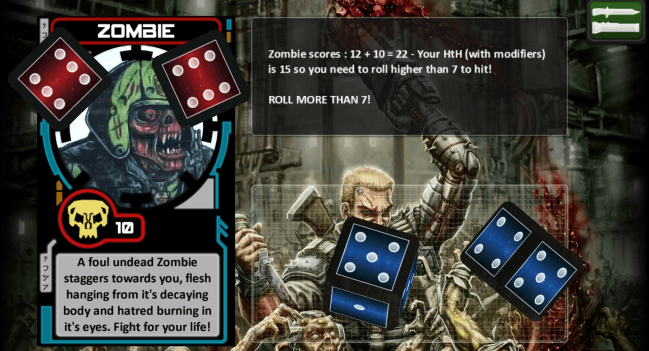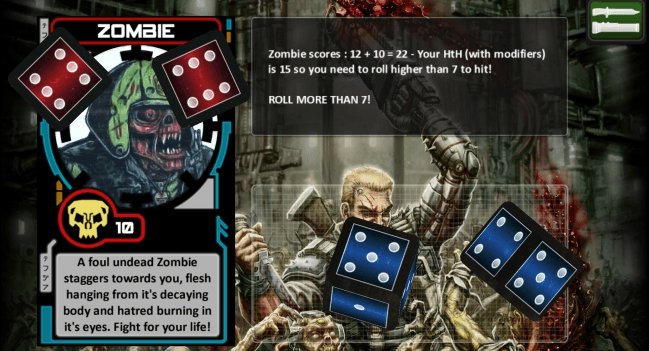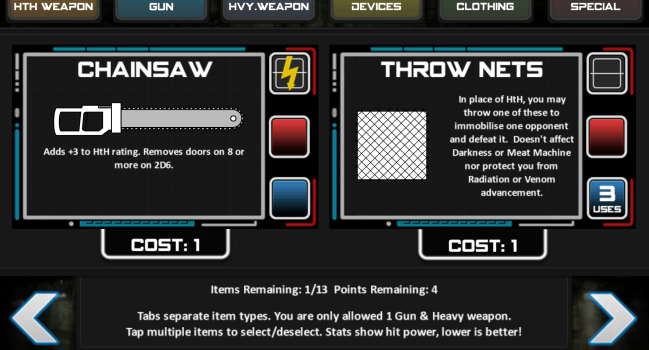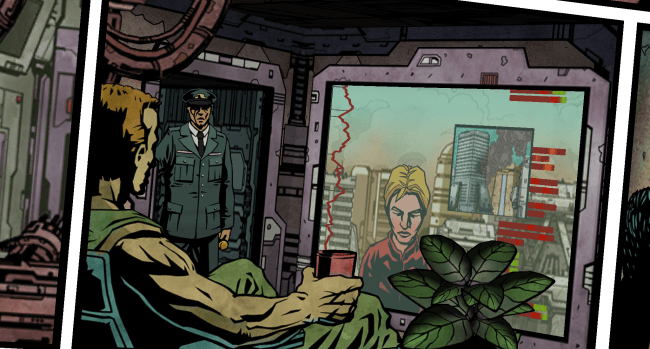- Wondering how to get Monopoly GO! free rolls? Well, you’ve come to the right place. In this guide, we provide you with a bunch of tips and tricks to get some free rolls for the hit new mobile game. We’ll …
The BEST Roblox Games of The Week – Games You Need To Play!
By Sho Roberts
Our feature shares our pick for the Best Roblox Games of the week! With our feature, we guarantee you'll find something new to play!All Grades in Type Soul – Each Race Explained
By Adele Wilson
Our All Grades in Type Soul guide lists every grade in the game for all races, including how to increase your grade quickly!Best Roblox Horror Games to Play Right Now – Updated Weekly
By Adele Wilson
Our Best Roblox Horror Games guide features the scariest and most creative experiences to play right now on the platform!
Chainsaw Warrior Review
Back in 1987, Games Workshop released a solitaire board game called Chainsaw Warrior. It was an impressive innovation back then, before co-operative games or solo variants became common and it got bought and played for its novelty. Now it’s been updated for the digital age, even though the intervening years have not been kind on the reputation of its cardboard parent.
To play, you create a solider by rolling stats like hand-to-hand skill and reflexes on some dice and picking some equipment. Then you send your intrepid character into a skyscraper where an inter-dimensional rift has opened up, filling the building with zombies, rats, slime, and worse. Your journey proceeds by turning over cards and resolving the monsters and traps thereon, until you die, run up against the very strict turn limit, or meet and defeat the game’s central villain for a victory.
The original was cumbersome and time-consuming to set up and play, and gave you relatively little reward for all that effort. Mechanically, it communicated little sense of its action-packed premise and had virtually no strategy or decision-making, with almost everything being resolved by a dice roll. An app version obviously takes away the administrative overhead, which is a boon. And I was hoping it would follow up with slick presentation to get its sci-fi horror theme across.

The App Store Chainsaw Massacre
Back in 1987, Games Workshop released a solitaire board game called Chainsaw Warrior. It was an impressive innovation back then, before co-operative games or solo variants became common and it got bought and played for its novelty. Now it’s been updated for the digital age, even though the intervening years have not been kind on the reputation of its cardboard parent.
To play, you create a solider by rolling stats like hand-to-hand skill and reflexes on some dice and picking some equipment. Then you send your intrepid character into a skyscraper where an inter-dimensional rift has opened up, filling the building with zombies, rats, slime, and worse. Your journey proceeds by turning over cards and resolving the monsters and traps thereon, until you die, run up against the very strict turn limit, or meet and defeat the game’s central villain for a victory.
The original was cumbersome and time-consuming to set up and play, and gave you relatively little reward for all that effort. Mechanically, it communicated little sense of its action-packed premise and had virtually no strategy or decision-making, with almost everything being resolved by a dice roll. An app version obviously takes away the administrative overhead, which is a boon. And I was hoping it would follow up with slick presentation to get its sci-fi horror theme across.
Disappointingly, it comes up short. The art is almost entirely recycled from the original game, which will please nostalgia buffs, but frankly it’s not really of the quality you’d expect from a modern production. There’s a racy soundtrack and a few audio clips but they’re not very varied. The user interface is okay, but a little cumbersome. You have to go through the process of selecting a weapon or item of equipment even when only one is relevant to the situation at hand.
When you imagine how it could have been, a series of first-person views through an urban apocalypse, or even just reusing the board game art with added multimedia, it feels like a golden opportunity was missed. Even a smoother UI allowing you to race faster through your game would have been a significant improvement.
And yet, for all the obvious deficiencies on display, both as an app and as a game, I couldn’t help but to have a good time. In spite of the annoying layers of drab presentation and unnecessary taps that the game put in the way, I still got sucked into its world in a way the original board game never did for me. Racing against the clock was thrilling, and every card flip as I crept closer to the lair of the ultimate Darkness was a brief moment of gleeful terror.
One of the reasons it works is because the designers, sensibly, added one thing that wasn’t in the original: a choice of difficultly levels. The board game was entirely random, yet punishingly hard to beat: a really off-putting combination. The app lets you play that way if you want, but both the two new difficulty settings let you choose your equipment rather than drawing it randomly. Your decisions here matter: choosing the right items makes a big difference to your chances of success, and there’s a lot of fun to be had working out what you need to take on your ascent into hell.
It’s still pleasingly difficult, even on the easiest setting, but without the considerable overhead or setting up the game, running through the cards, and putting it away, that’s a good thing: offering replay value. Those administrative obstacles, it now seems, were the biggest barrier standing in the way of my enjoyment of the original. Farm them out to the processor and suddenly the game works in spite of its flaws: it feels suitably tense, thrilling, and brutal.
I still can’t help but feel a twinge of sadness that more effort wasn’t put into the presentation. Indeed the whole thing carries a faint air of a rush job: for some reason it drains battery at an unbelievable rate, almost certainly the result of lazy coding. But despite the problems, I’ve found myself coming back to Chainsaw Warrior time and time again. Being repeatedly slaughtered by the minions of the netherworld has never been so much fun.

The good

The bad
More articles...
Monopoly GO! Free Rolls – Links For Free Dice
By Glen Fox
Wondering how to get Monopoly GO! free rolls? Well, you’ve come to the right place. In this guide, we provide you with a bunch of tips and tricks to get some free rolls for the hit new mobile game. We’ll …The BEST Roblox Games of The Week – Games You Need To Play!
By Sho Roberts
Our feature shares our pick for the Best Roblox Games of the week! With our feature, we guarantee you'll find something new to play!All Grades in Type Soul – Each Race Explained
By Adele Wilson
Our All Grades in Type Soul guide lists every grade in the game for all races, including how to increase your grade quickly!Best Roblox Horror Games to Play Right Now – Updated Weekly
By Adele Wilson
Our Best Roblox Horror Games guide features the scariest and most creative experiences to play right now on the platform!








 “
“ “
“ “
“ “
“